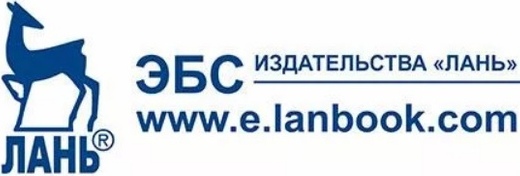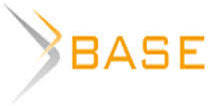Serbian author's fairy tales in primary school textbooks: playing with a puppet
Introduction. Attributing characteristics of living beings to inanimate objects and extending them to almost all the properties of life (reproduction, birth, development, and death) indicates a shift in the boundaries in children’s understanding of concepts and processes. It directly affects the relationship that a child establishes with life and the readiness to accept puppets in Serbian language classes and fairy tales as a literary genre closest to the process of students’ maturing. If we examine the fairy tale through the prism of puppets and puppet theater, we can expect that an innovative approach to educational practice will result in pushing the boundaries of play, as well as easing the transition process from play activities in preschool institutions to fairy tales in first-grade reading textbooks. Changes in the educational process inevitably lead to amendments to the Regulations on the Curriculum in order to align the instruction process with the cognitive and age-related abilities of first-grade primary school students. The extent to which the content of the Serbian language curriculum in the first grade of primary school has changed can be inferred from the example of Serbian original fairy tales. The purpose of the study. Identify opportunities to identify and improve overall student performance indicators using the example of an original fairy tale in primary school first grade. Materials and methods. Through a comparative analysis of the didactic-methodological model of first-grade primary school readers from publishing houses BIGZ školstvo, Eduka, Zavod za udžbenike i nastavna sredstva, Kreativni centar, and Nova škola, we will attempt to examine the changes in original fairy tales in contemporary conditions and verify their alignment with the Regulations on the Curriculum. We will identify and provide opportunities for enhancing general achievement of students in the areas of Speech, Reading Skills and Comprehension, and Literature at all levels. Results. Upon examination, we have related the prevalence and potential of puppet play, using the example of puppet theater designed in a way that transforms the faceless puppet into a teaching aid that serves as a mediator between the child and the fairy tale. The development of skills and competencies related to the social, emotional, and aesthetic aspects of first-grade primary school students is linked to children's development, acquisition of knowledge, and competencies at the level of the educational process, emphasizing the importance of opportunities for enhancing children's play through the example of fairy tales. Conclusions. Therefore, the contribution of this paper is reflected in the proposal to improve the position of Serbian original fairy tales in the first grade of primary school, identifying specific possibilities for enhancing general achievement of students through questions, assignments, and tasks that are part of the didactic-methodological model.

















Пока никто не оставил комментариев к этой публикации.
Вы можете быть первым.
Bojović, D. (2008), Vishe od igre (dramski metod u radu sa detsom) [More Than a Game (Drama Method in Working with Children)], Kreativni tsentar, Beograd, Serbia.
Bokšan-Tanurdžić, Z. (2001), Od igre do pozornice [From Game to Stage], Kreativni centar, Beograd, Serbia.
Vučković, M. (2011). Čitanka za prvi razred osnovne škole [Reader for the First Grade Primary School], Zavod za udžbenike i nastavna sredstva, Beograd, Serbia.
Jović, V. (2018), ČUVARI MAŠTE: čitanka: srpski jezik za prvi razred osnovne škole [Guardians of Imagination: Reader: Serbian Language for First Grade Primary School], BIGZ školstvo, Beograd, Serbia.
Jović, M. and Jović, I. (2017), Čitanka za prvi razred osnovne škole [Reading Book for the First Grade Primary School], Eduka, Beograd, Serbia.
Dotlić, Lj. and Kamenov, E. (1996). Književnost u dečjem vrtiću [Literature in the Kindergarten], Zmajeve dečje igre, Novi Sad, Serbia.
Lazić, D. (2020). Primena lutaka kao nastavnog sredstva u mlađim razredima osnovne škole [The Use of Puppets as Teaching Tools in Younger Grades of Primary School], Svarog, Serbia.
Marinković, S. and Marković, S. (2018), Čitanka za prvi razred osnovne škole [Reader for First Grade of Primary School], Kreativni centar, Beograd, Serbia.
Jurkovski, H. (2007), Povijest europskog lutkarstva II. dio – dvadeseto stoljeće [History of European Puppetry Part II – The Twentieth Century], Međunarodni centar za usluge u kulturi, Zagreb, Croatia.
Pokrivka, V. (1985), Dijete i scenska lutka [Child and Theater Puppet], Školska knjiga, Zagreb, Croatia.
Stakić, M. (2019). “Fairy Tale as a Linguistic Template in Teaching Grammar in Younger Grades of Primary School”, Zbornik radova pedagoškog fakulteta u Užicu, 143-156 (in Serbian).
Cohen, M.L. and Ambrose, C.D. (1993), “Theories and Practices for Differentiated ducation for the Gifted and Talented”. In K.A. Heller, F.J. Mönks, A.H. Passow (Eds.), International Handbook of Research and Development of Giftedness and Talent. Oxford, New York, Seoul, Tokyo: PERGAMON, 339-363. Available at: http://positivedisintegration.com/Cohen1993chpt036.pdf (Accessed 8 April 2024).)
Ćuk, M. and Ivanović, D. (2018). Čarobna slova – Čitanka za prvi razred osnovne škole [Magic Letters – Reader for the First Grade Primary School], Nova škola, Beograd, Serbia.